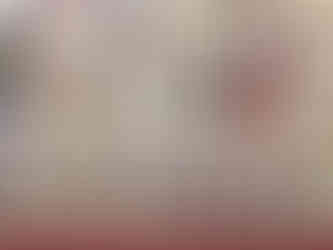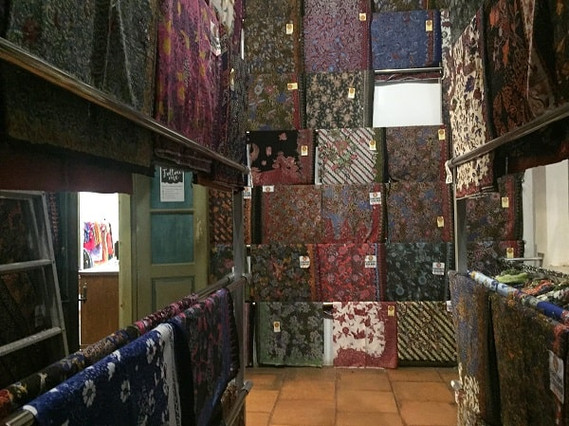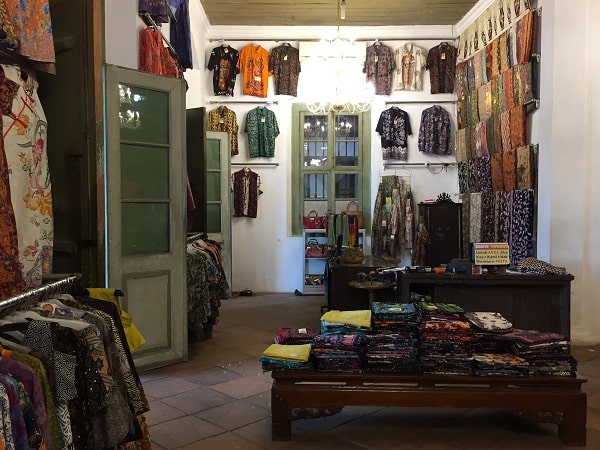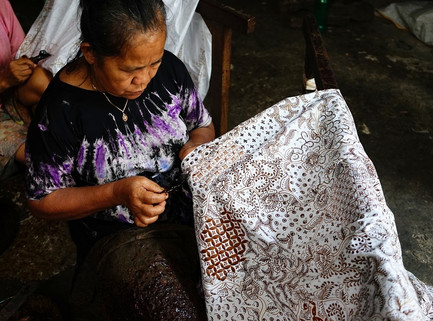Batik Tulis Lasem
- Sew, Jahit
- Jan 12, 2020
- 7 min read
Updated: Jan 16, 2024
Discover the heritage art of hand-drawn Peranakan batik of Lasem, the northern coastal town in the Rembang regency of the Central Java province, Indonesia.

PRELUDE
My husband and I have always been fans of batik fabrics. In Malaysia where we live, batik is one of the heritages that the cultural and tourism industries promote (rather feebly, if you ask me). Just over a decade ago, Malaysia and Indonesia were in the heat of an interesting cultural feud over the origins of batik – with both countries claiming to “own” batik. On 2 October 2009, the feud essentially ended when UNESCO inscribed the Indonesian Batik on the Representative List of the Intangible Cultural Heritage of Humanity. To the masses, this basically means Indonesia has won.
Such dramatized and highly publicized international dispute seems to suggest that Malaysian Batik and Indonesian Batik are the same thing. While both types use the same wax-resist dyeing technique, the difference lie subtly in the styles and compositions of motifs on the textile. The following excerpt from Wikipedia about batik nicely sums up the differences:
The method of Malaysian batik making is different from those of Indonesian Javanese batik, the pattern being larger and simpler with only occasional use of the canting (pronounced “tjanting”) to create intricate patterns. It relies heavily on brush painting to apply colours to fabrics. The colours also tend to be lighter and more vibrant than deep coloured Javanese batik. The most popular motifs are leaves and flowers. Malaysian batik often displays plants and flowers to avoid the interpretation of human and animal images as idolatry, in accordance with local Islamic doctrine. However, the butterfly theme is a common exception.
This post, however, is about Indonesian Batik, more specifically, the hand-drawn ones of Lasem origins.
BATIK TULIS LASEM
Red Pointer Showing Location of Lasem in the Indonesian Java Island. Click for Google Map.
In Lasem (and some other parts of the Java Island), long history of Dutch colonization and Chinese immigration brought in foreign cultural influence, traces of which are present today in their language, cuisine, architecture and batik heritage. The batik of Lasem, or more affectionately, Batik Tulis Lasem (“hand-drawn batik of Lasem”), is unique even within the Indonesian Batik genre. Its distinctive characteristics include bright red colours and motifs with strong Chinese influence such as deities, dragons, phoenix, gold fish, pagodas and Chinese scripts.
Chinese Influence in Batik Tulis Lasem
It is this unique blend of Peranakan culture that attracted my husband and I to visit Lasem early this month. In Lasem, we put up at Rumah Merah Tiongkok Kecil (“Red House of Little China”), which is an old heritage house turned bed and breakfast.
Besides exploring the streets of Tiongkok Kecil (“Little China”) flanked by old Chinese houses with Dutch influence, and dropping by a couple of old Chinese temples (with the same Dutch influence in their architecture), most of our time in Lasem was spent visiting stores that sold and workshops that produced Batik Tulis Lasem.
The property in which our accommodation was housed shared a compound with Oemah Batik Lasem (“House of Batik Lasem”), a large batik store that sold authentic hand-drawn batik fabric, machine printed batik fabric, ready-made batik garments, and other batik accessories. This was a huge advantage that gave us all the time and convenience to admire the batiks, and choose our batik purchases.
Compound and Interior of Oemah Batik Lasem
Some Close Ups of the Batiks in Oemah Batik Lasem.
About 20-minute walk from Oemah Batik Lasem is the Babagan village, where in 2015 the government launched the Desa Wisata Batik Tulis Lasem (“Tourism Village of Batik Tulis Lasem”). It is a living village where many batik workshops are actively producing and selling Batik Tulis Lasem. Visitors are welcomed to watch the artists, learn the process, and even have a go at using the canting.
Artists in One of the Workshops in Desa Wisata Batik Tulis Lasem, and Their Tools
BATIK IN SEMARANG – THE INTERNATIONAL GATEWAY TO LASEM
The closest international airport from Lasem is a 4-hour drive away in Semarang, the capital city of Central Java province. In keeping with the batik theme of our trip while in Semarang, we explored the touristy Kampung Wisata Batik Semarang (“Tourism Village of Batik Semarang”), a living village sponsored and promoted by the government for batik tourism. The village was beautifully decorated with colourful murals and landscaped footpaths. There, we found plenty of "Batik Semarang", which were basically batik with motifs of symbols of Semarang such as the warak ngendog and some iconic structures in the city, with not as much cultural or historical significance as those in Lasem. Although, there were also batiks of various Javanese styles. The handmade batiks in Kampung Wisata Batik Semarang were mostly products of the village's own artists.
Kampung Wisata Batik Semarang offering Batik with Motifs that Are Symbolic of Semarang
Some Close Ups of Batiks in Kampung Wisata Batik Semarang.
A Mix of Handmade and Machine-Printed.
Having said that, Semarang being a provincial capital city also meant we could find batiks of various Javanese origins (including Lasem) all in one place. Among the many large and small batik stores in Semarang, we visited Ayu Busana Batik, Batik Keris, and Indie Batik & Gift.
Ayu Busana Batik offers a large variety of handmade batiks of different Javanese origins, as well as machine-printed ones. They also offer ready-made garments of high quality and workmanship. The store caters for a very wide range of budget, from IDR 90,000 machine printed batiks to exquisitely handmade ones priced at millions of rupiah.
Interior of Ayu Busana Batik and Some Ready-Made Garments
Some Close Ups of the Batiks in Ayu Busana.
These are All Handmade and of Various Javanese Origins.
Batik Keris is a famous chain batik boutique in Indonesia that sold ready-made batik garments, both with handmade batik as well as machine-printed batik. They have ranges for ladies, men and children. You could find matching sets for the entire family. The one we visited was located inside Paragon Shopping Mall.
Store's Interior Decorations and Products Display in Batik Keris, Paragon Shopping Mall
Indie Batik & Gift is a quaint batik store located within an upscale neighbourhood, and their batik selections and prices reflected this. The store had a cosy interior, with only a handful batik hung on courtly batik stands and the rest neatly folded in an intricate Chinese cupboard. We had the feeling that the owner was a fine batik collector who prized his collections while offering them for sale at dignified prices. Just an impression - we could be wrong.
Indie Batik & Gift
WHAT WE BROUGHT HOME
With such overwhelming options available, and limited by both budget and luggage capacity, picking out our batik purchases was not easy. While Lasem offered the most exotic selections of hand-drawn Batik Tulis Lasem, it was in Semarang that we found some machine-printed batik that mimicked Batik Tulis Lasem, at a fraction of the price, that better suited my sewing needs, because never in my right mind would I cut into a piece of art where every inch of the fabric had been so meticulously hand-drawn and painted.
It is important to note that Indonesia Batik, even the machine-printed ones, come in standard cuts of about 105 cm width by 210 cm length.
Here is a rundown of the batik fabrics we bought.

Genuine Batik Tulis Lasem with Chinese Script Motif.
IDR 1,100,000*. From Oemah Batik Lasem.

Genuine Handmade Batik with Butterfly Motif.
IDR 400,000. From Ayu Busana, Semarang.

Machine-Printed Batik That Mimics Batik Tulis Lasem, in 4 Different Shades.
IDR 90,000 Each. From Ayu Busana, Semarang.
Machine-Printed Batik with Rooster Motif, in 2 Different Shades.
IDR 90,000 Each. From Ayu Busana, Semarang.

Machine-Printed Batik with Floral Motif.
IDR 100,000*. From Oemah Batik Lasem.
Note (*): As lodging guests of Rumah Merah Tiongkok Kecil, we enjoyed some 10% to 20% discounts on these purchases from Oemah Batik Lasem.
We also bought a book specifically about the coastal batik of Indonesia.

Batik Pesisir - An Indonesian Heritage (Collection of Hartono Sumarsono).
Promotional Price at IDR 590,000. From Ahmad Yani International Airport, Semarang.
WHAT ELSE WE DID IN SEMARANG AND LASEM
Besides batik, Semarang and Lasem (and somewhere along the land commute between them) have plenty of other interesting things to offer. Here are some non-batik related photos of our trip:
Tiongkok Kecil, Lasem
Old Chinese Temples in Lasem and Semarang
Pelabuhan Perikanan Tasik Agung ("Tasik Agung Fishery Port")

Sea Salt Farm Huts in Rembang
Kota Lama ("Old Town") of Semarang.
The last two photos were taken in the Old Dutch Church.
Antiques Shops in Kota Lama, Semarang.
Some Old Floor Tiles Seen in Various Locations during the Trip
INDONESIAN HOSPITALITY
I am compelled to dedicate a couple of paragraphs on Indonesian hospitality. Our experience in Semarang and Lasem had been nothing by heartwarming and pleasant. The people we met were accommodating, honest and genuinely helpful. Throughout our trip, many instances have proven to us again and again the extent of Indonesian hospitality, but perhaps the most remarkable one happened in the Babagan village (Desa Wisata Batik Tulis Lasem).
While my husband and I both love taking photos, my husband is the adventurous one with the guts to wander off regular paths, into seemingly prohibited or private areas, peering into windows as well as over walls and doors. At one such door in the Babagan village, my husband was “caught” by the caretaker. Instead of chasing us away, the caretaker (a middle-aged lady) happily invited us into her house, where we met her husband resting on a lazy chair due to slight immobility, also bearing the same wide smile and twinkling eyes. They enthusiastically ushered us around, telling us stories about the family that used to live there, and of course we could take photos to our hearts’ content. It was an old Chinese house with Dutch influence in its architecture and interiors – typical in the region. Its owners have long passed and their descendants have since moved to other cities and countries. All except one – the caretaker lady turned out to be one of the descendants herself! It was a really refreshing encounter.
A Chance Encounter with an Old Chinese House in Babagan Village, Lasem
CONCLUSION
Lasem is just one of the many locations in Indonesia that batik enthusiasts can visit. This trip has triggered a desire to learn more about Indonesian batik and batik in general, to embark on a batik-discovery journey, where we plan to visit the origins of the various types of Indonesian batiks, as well as explore our own batik destinations in Malaysia (read: Kelantan, Terengganu and Pahang).
Meanwhile, I am excited to dive into my batik sewing projects!
































































































































































































































































